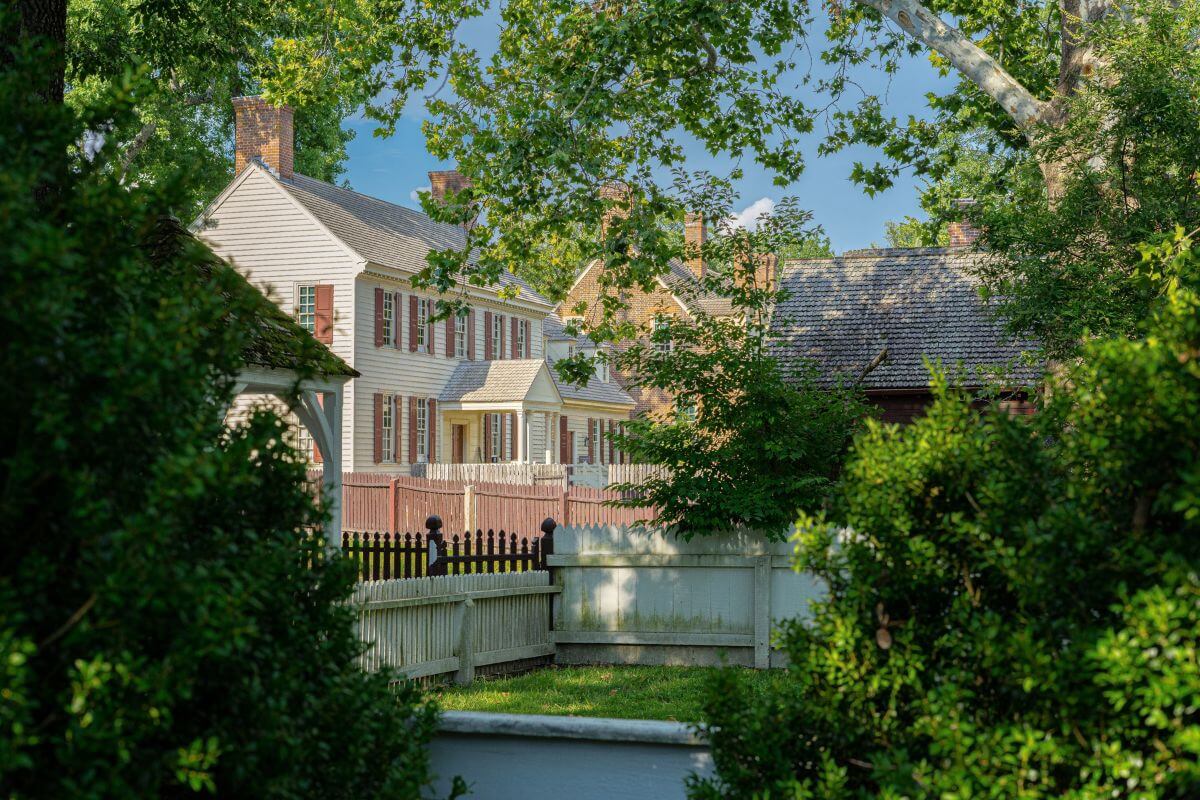Colonial homes have a rich history and an undeniable charm. Whether you live in a restored colonial house or simply want to give your home a classic and timeless look, decorating a colonial home requires careful attention to detail and a focus on traditional design elements. In this article, we will share tips and tricks on how to decorate a colonial home that will make it feel cozy, elegant, and authentic.
1. Understand Colonial Design Style
Before diving into decorating a colonial home, it’s important to understand the design style of the era. Colonial homes were built between the 1600s and 1800s in America and were heavily influenced by European design, particularly from England, Spain, and France. Colonial style is known for its symmetry, simplicity, and practicality.
2. Choose Appropriate Colors
Choosing the right colors is essential in achieving an authentic colonial look. Colonial homes were typically painted with muted colors, such as earthy greens, warm yellows, soft blues, and creamy whites. These colors complemented the natural materials used in colonial architecture, such as wood, brick, and stone.
3. Embrace Wood Accents
Wood was a primary material used in colonial homes, and it should be incorporated into the decor as well. Use wooden furniture, such as a dining table or a coffee table, to add warmth and character to the space. You can also add wooden accents, such as a wooden tray or a wooden picture frame, to bring in more natural elements.
4. Incorporate Traditional Textiles
To add texture and warmth to a colonial home, incorporate traditional textiles such as wool, linen, and cotton. Use these fabrics for curtains, throws, and cushions to create a cozy and inviting atmosphere.
5. Hang Classic Artwork
Colonial homes often featured traditional artwork, such as landscapes, still lifes, and portraits. Hang classic artwork that reflects the colonial period to add a touch of elegance and history to your home.

6. Add Vintage Decor
To achieve an authentic colonial look, add vintage decor to your home. This could include antique pieces, such as a grandfather clock or a wooden chest, or vintage-inspired decor, such as a wrought-iron candle holder or a vintage map.
7. Focus on Symmetry
Symmetry was an essential element in colonial design. To create a harmonious and balanced space, arrange furniture symmetrically and use pairs of objects, such as lamps, vases, or chairs, throughout the room.
8. Use Natural Elements
Incorporating natural elements into a colonial home is essential in achieving an authentic look. Use fresh flowers or greenery to add life and freshness to the space. You can also add natural elements such as seashells, pinecones, or rocks to create a connection to the outdoors.
9. Consider Lighting
Lighting is crucial in creating an inviting and cozy atmosphere in a colonial home. Use warm-toned light bulbs to create a soft and welcoming glow. Consider adding a chandelier or wall sconces to add elegance and traditional charm to the space.
10. Maintain Simplicity
Colonial design is known for its simplicity and practicality. Avoid clutter and maintain a simple and clean aesthetic. Choose functional pieces of furniture that are both stylish and useful.
11. Pay Attention to Details
Small details make a big difference in achieving an authentic colonial look. Pay attention to details such as molding, trim, and hardware to ensure that they are in line with the period of the home.
12. Mix Old and New
While it’s important to maintain the authenticity of a colonial home, mixing old and new elements can create a more dynamic and interesting space. Consider incorporating modern pieces, such as a statement light fixture or a contemporary art piece, to add a touch of contrast and balance to the traditional decor.
13. Focus on Functionality
Colonial homes were designed with practicality in mind, and functionality should be a priority when decorating. Choose furniture that serves multiple purposes, such as a storage ottoman or a console table with drawers, to maximize space and storage.
14. Use Area Rugs
Area rugs are a great way to define a space and add warmth to a colonial home. Choose a rug with a traditional design and muted colors to complement the decor. Place the rug under the dining table or in the living room to anchor the space.
15. Incorporate Natural Light
Natural light is an essential element in creating a warm and inviting space in a colonial home. Use sheer curtains or blinds to allow natural light to flow in while maintaining privacy. Consider adding a large mirror to reflect natural light and make the space feel brighter and more spacious.
In conclusion, decorating a colonial home requires attention to detail, a focus on traditional design elements, and a balance between old and new. By choosing appropriate colors, incorporating wood accents, using traditional textiles, and paying attention to details, you can create a cozy and authentic colonial home. Remember to maintain simplicity and functionality while adding personal touches to make the space feel like home.
16. FAQs:
Is it necessary to use traditional textiles in a colonial home?
Traditional textiles such as wool, linen, and cotton can add texture and warmth to a colonial home, but it’s not necessary to use them exclusively. You can also use modern fabrics that complement the decor.
Can I mix modern elements with traditional decor in a colonial home?
Yes, mixing old and new elements can create a more dynamic and interesting space. Just make sure to maintain the authenticity of the colonial period while incorporating modern pieces.
How can I create a balance between old and new in a colonial home?
To create a balance between old and new in a colonial home, choose modern pieces that complement the traditional decor and add a touch of contrast. Focus on functionality and maintain simplicity while adding personal touches.
What is the best way to incorporate natural light into a colonial home?
To incorporate natural light into a colonial home, use sheer curtains or blinds to allow natural light to flow in while maintaining privacy. Consider adding a large mirror to reflect natural light and make the space feel brighter and more spacious.
Can I use bright colors in a colonial home?
While muted colors were commonly used in colonial homes, you can use bright colors as long as they complement the decor and maintain a balanced and harmonious look.



